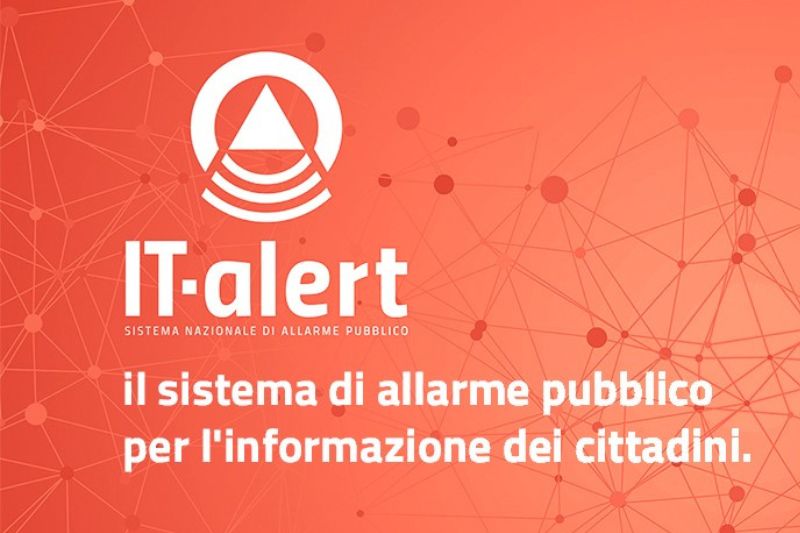IT-Alert public warning system for civil protection activities: Directive update published.
Types of risks involved in sending messages listed. The period of testing prolonged for one year

The Directive of the Minister for Civil Protection and Sea Policy of February 7, 2023 "Civil Protection Alerting and IT-Alert Public Alert System" has been published in the Official Gazette. The text updates the previous Directive of the Prime Minister of October 23, 2020 to conform to the changes introduced to the Electronic Communications Code by Legislative Decree No. 207 of November 8, 2021.
IT-Alert is the public alert system that, in cases of imminent or ongoing major emergencies and disasters, allows providers of number-based mobile interpersonal communication services to broadcast public alerts to affected end users through the transmission of messages called "IT-Alert Messages."
Specifically, the Directive regulates the use of the IT-Alert public alert system for civil protection activities only, extending the trial period-currently underway-until February 13, 2024.
Specifically, it provides that, in some specific cases of imminent or ongoing major emergencies and disasters that could become national emergencies under the Civil Protection Code, the National Civil Protection Service will supplement the information and communication methods already provided for by current regulations with the IT-Alert system to inform the population in order to encourage the adoption of self-protection measures in relation to the specific type of risk and the reference context. This system, in fact, complements the already existing alert systems at the state, regional and local levels, and is not life-saving in itself, but is aimed, with respect to a specific event that has occurred or is imminent, at allowing the rapid diffusion of early warning information.
The types of risk that are, currently, provided for in the Directive for the purpose of using IT-Alert are as follows:
- tsunami generated by an earthquake;
- major dam collapse;
- volcanic activity, relative to the volcanoes Vesuvio, Campi Flegrei, Volcano and Stromboli;
- nuclear accidents or radiological emergency situation;
- major accidents in establishments subject to Legislative Decree No. 105 of June 26, 2015;
- intense precipitation.
During the experimental period, operational indications will be prepared and adopted for each type of risk, shared among the different components of the National Service of Civil Protection, containing for each of the planned risk scenarios, objectives, mode of dispatch, area to alert and contents of the IT-Alert message. During the trial period, it is planned that information campaigns will be implemented, both for administrations and citizens, to explain the purposes and operation and to point out the limitations of IT-Alert for civil protection activities.
Furthermore, it is defined that, in order to technically evaluate the outcomes of the experimentation and the possibility of the transition to the operability of the system, the Department of Civil Protection will proceed to the discussion with the territorial bodies involved in the specific activity, with telephone operators, and with the section of the Commission for the prediction and prevention of major risks competent for the type of risk subject to the phase of the experimentation carried out.